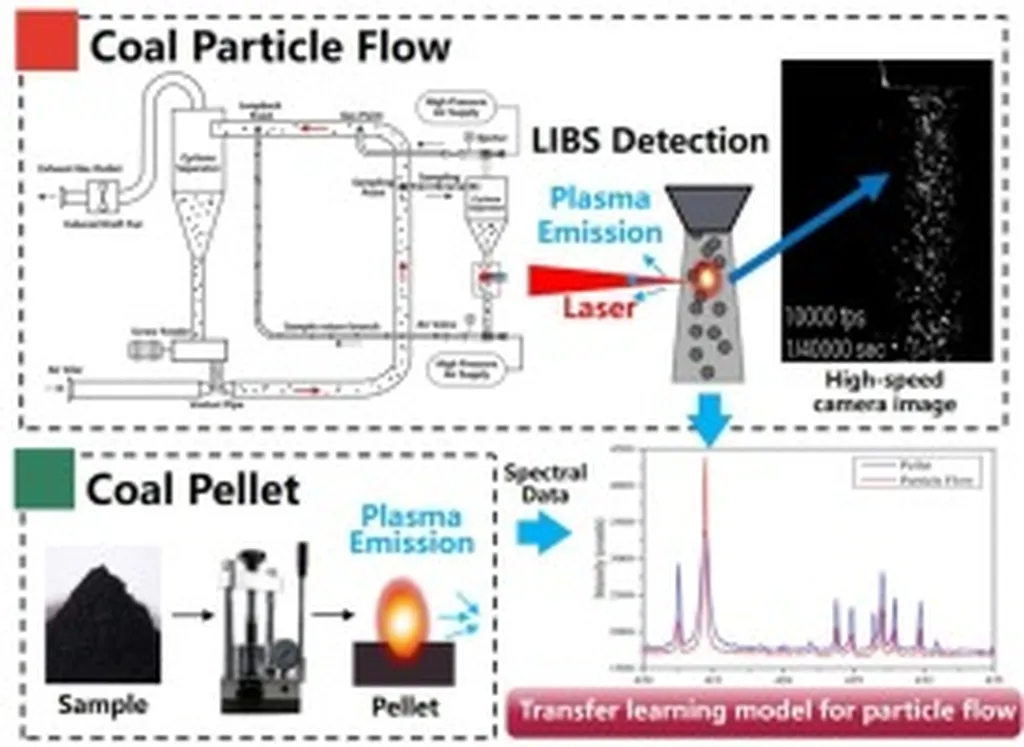In the quest for cleaner and more efficient coal utilization, researchers have turned their attention to lump coal pyrolysis, a process that could offer significant advantages over traditional pulverized coal methods. A recent study published in the journal *Energies* has shed new light on how varying coal particle sizes can influence the pyrolysis process, potentially paving the way for optimized industrial applications.
Led by Yuanpei Luo from the State Key Laboratory of Multiphase Flow in Power Engineering at Xi’an Jiaotong University, the research focuses on low-rank coal from Ordos, Inner Mongolia. The team conducted pyrolysis experiments on coal particles of different sizes—ranging from 2 to 30 millimeters—to understand how particle size affects heat and mass transfer during pyrolysis.
“Pyrolysis is a critical process for achieving efficient and clean utilization of coal,” Luo explained. “Our study reveals that particle size plays a pivotal role in determining the effectiveness of this process.”
The findings are intriguing. Larger particles were found to enhance bed-scale convective heat transfer, accelerating the temperature propagation from the reactor walls to the coal center. However, excessively large particles can create significant intra-particle thermal gradients, which can impede the pyrolysis process at the core. The sweet spot, according to the research, lies with particles sized between 10 and 20 millimeters. This size range balances the competing effects, leading to uniform thermal attainment and optimal outcomes, including a peak hydrogen yield of 20.99 vol% and maximum char graphitization.
The study also examined tar yield, which initially increases with particle size but then declines. This behavior is attributed to the competing mechanisms of improved bed permeability and inhibited volatile release. “Enlarging particle size can improve bed permeability, reducing tar residence time and secondary reactions,” Luo noted. “However, it can also inhibit volatile release and intensify thermal cracking of tar in oversized coal blocks.”
The research employed advanced characterization techniques, including X-ray diffraction (XRD), Raman spectroscopy, Brunauer–Emmett–Teller (BET) analysis, scanning electron microscopy (SEM), gas chromatography (GC), and GC–mass spectrometry (GC-MS). These tools provided a comprehensive understanding of the pyrolysis mechanisms at play.
One of the most notable findings was the abrupt reduction in porosity for the 10–20 mm particle size group, attributed to pore collapse caused by intense polycondensation reactions. This insight is crucial for understanding the structural changes that occur during pyrolysis and how they impact the overall efficiency of the process.
The implications of this research are significant for the energy sector. By optimizing particle size, industries can enhance the efficiency of lump coal pyrolysis, leading to better gas yield and superior coke quality. This could translate into more cost-effective and environmentally friendly coal utilization processes.
As the energy sector continues to seek cleaner and more efficient methods of coal utilization, this research provides valuable insights that could shape future developments in the field. By understanding the intricate relationship between particle size and pyrolysis efficiency, industries can make informed decisions that balance economic viability with environmental sustainability.
Published in the journal *Energies*, this study offers a critical guide for industrial-scale lump coal pyrolysis optimization, potentially revolutionizing the way we approach coal utilization in the years to come.

